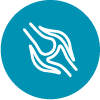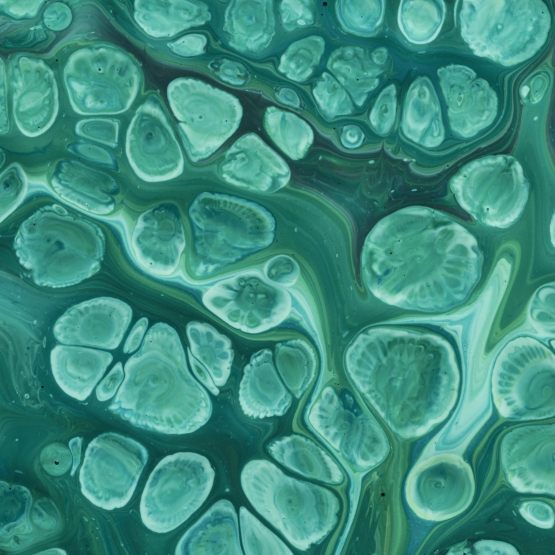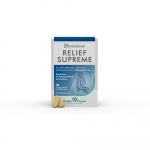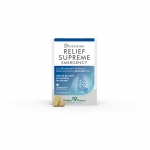Ours is a holistic approach that does not hinder the physiological processes of the body. It's an approach that encourages the restoration of balance, by combatting the causes of symptoms as efficiently as possible and ensuring fast relief.
Symptoms and relief
SELECT YOUR NEED

Osteoarticular and muscular system
INFLAMMATION AND PAIN
INFLAMMATION is an adaptive response to anything that our body perceives as potentially harmful.
Clinically, the tell-tale signs of inflammation are:
- warmth in the inflamed area
- redness
- swelling
- pain and functional impairment
These symptoms frequently affect the musculoskeletal system, thus creating localized tension in the muscles, tendons and bones.


Inflammation develops through complex biochemical processes involving the targets of inflammation, in which molecular and cellular components that are closely interconnected form part, such as:
- The arachidonic acid cascade
- ROS and RNS
- The complement system
- The endocannabinoid system
- Glucocorticoid receptors
WHAT IS PAIN?
Pain is the means by which the body signals damage to its tissues. As defined by the IASP (International Association for the Study of Pain - 2020) and the World Health Organization, pain is "an unpleasant sensory and emotional experience associated with (or similar to that associated with) potential or ongoing tissue damage."
It can be one of two types:
- Acute pain, which appears suddenly; its possible causes include an illness, trauma (e.g., an injury while playing sports) or inflammation of a tissue in the body (such as pain associated with a muscle strain). Its duration is limited in time; when the discomfort lasts for more than 12 weeks, it is classified as chronic pain.
- Chronic pain may result from an initial trauma (e.g., a fall on one's shoulder), which ends up having long-term consequences, or it may be caused by a persistent condition (e.g., chronic degenerative conditions such as arthritis).
Some types of pain:
| TYPE OF PAIN | THE MOST COMMON | SYMPTOMS |
| Acute pain |
|
|
| Chronic pain |
|
|
WHAT IS THE DIFFERENCE BETWEEN INFLAMMATION AND PAIN?
Pain and inflammation are two different things, but they actually have many things in common. To be specific, in most cases, the pain we experience in one part of the body, whether the head (headache), a muscle (myalgia), or somewhere else, is often caused by an underlying inflammation.
Muscle contracture is a very common issue that occurs when certain skeletal muscles contract involuntarily and persistently, causing intense pain.
The hypertonia, stiffness and hardening of the muscle, perceptible to the touch and no longer under the control of the nervous system, are not a consequence of injury to the muscle fibers, but are due to the occurrence of an unanticipated, sudden movement that causes a stretching and re-twisting of the fibers.
Muscle contracture occurs as a form of protection of the muscle that is overworked and stressed beyond its physiological capacity, and can last for a few days (on average 3 to 7 days). There can be different predisposing factors: in the case of sportsmen, muscle contracture may occur as a result of failure to warm up or inadequate preparation; in everyday life, even a simple cold air draft can be a factor, or a sudden and/or unforeseen and uncoordinated movement, or prolonged incorrect posture.
Some examples of muscle contracture are: lumbago, torticollis, neck pain.
Lumbago is acute low back pain (for 2-3 days) that manifests as intense pain in the lower back, accompanied by stiffness of the muscles.
Torticollis is the contracture of the lateral muscles of the neck, usually only affecting those on one side, making the rotation of the head towards the affected side painful, and in many cases even preventing it altogether. It is very common among the population and very bothersome, as the acute phase presents with intense pain which can spread along the bundles of muscle fibers, extending to the shoulders, arms and hands.
Neck pain, also called cervicalgia, is pain at the level of the cervical spine, and corresponds to what is commonly described as "having neck pain." It is widespread among the population and likewise very bothersome, because of the location of the painful area (the muscles of the cervical spine).

